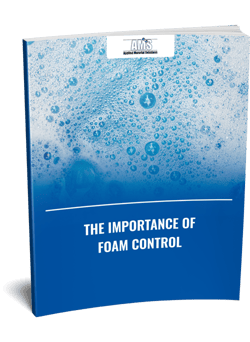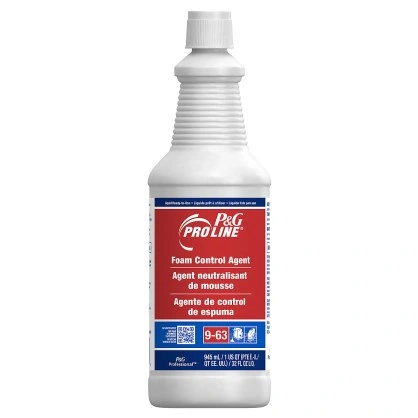The Duty of Foam Control in Wastewater Treatment: Ideal Approaches and Techniques
The Duty of Foam Control in Wastewater Treatment: Ideal Approaches and Techniques
Blog Article
A Comprehensive Guide to Carrying Out Foam Control Solutions in Your Operations
Efficient foam control is a crucial element of functional effectiveness that usually goes neglected. Recognizing the intricacies of foam generation can dramatically impact both efficiency and item high quality. This overview outlines the various difficulties presented by foam and the varied remedies readily available, providing a framework for selecting and applying one of the most ideal techniques. By taking a look at essential elements such as application compatibility and workers training, organizations can maximize their foam monitoring initiatives. As we explore these elements, the capacity for transformative improvements in your operations comes to be evident. What steps will you take next?
Understanding Foam Difficulties
Foam challenges are a significant problem throughout different industries, influencing functional effectiveness and product quality. The development of too much foam can impede processes such as blending, transport, and storage space, leading to raised downtime and waste. In sectors like food and beverage, pharmaceuticals, and petrochemicals, foam can disrupt assembly line, creating item disparities and contamination dangers.
In addition, foam can block devices performance, bring about pricey fixings and upkeep. In wastewater therapy, foam can interrupt clarifier operations, resulting in lower treatment efficiency and governing conformity concerns.
Recognizing the underlying causes of foam generation is important for reliable administration. Aspects such as surfactants, temperature variations, and frustration degrees can all add to foam manufacturing. Recognizing these elements enables markets to apply targeted techniques that decrease foam development while maintaining product stability.
Kinds of Foam Control Solutions

Mechanical remedies involve the use of tools such as foam skimmers or defoamers. Chemical solutions, on the various other hand, include the application of defoaming agents-- substances that interrupt the foam framework, leading to its collapse. Foam Control.
Last but not least, functional methods focus on procedure modifications. This may entail customizing devices parameters, such as temperature level and stress, or changing the flow rates of liquids to minimize foam generation. Carrying out great housekeeping methods can also reduce foam formation by lowering impurities that add to foam stability.
Selecting the appropriate foam control solution involves evaluating the specific demands of the procedure, including the type of procedure, the attributes of the products included, and safety and security considerations.
Selecting the Right Products
Picking the best foam control products calls for an extensive understanding of the particular application and its unique obstacles. Variables such as the kind of foam, the environment in which it occurs, and the wanted result all play essential roles in item option. Foam Control. In industries like food handling, it is imperative to select food-grade defoamers that comply with security guidelines while properly managing foam.
In addition, take into consideration the thickness of the fluid where the foam trouble exists. Some items are developed for low-viscosity applications, while others are tailored for thicker liquids. Compatibility with existing processes is another essential facet; the selected foam control agents need to incorporate perfectly without disrupting general operations.
Another important aspect is the method of application. Some products may require dilution, while others can be applied straight. Assessing the simplicity of usage and the called for dose can offer insights right into the item's efficiency and cost-effectiveness.
Application Approaches
Effective execution strategies for directory foam control services require a systematic method that lines up item choice with functional demands. The primary step entails an extensive evaluation of the processes where foam happens, recognizing particular areas that demand intervention. By involving cross-functional groups, consisting of engineering, quality, and production guarantee, companies can gather insights that inform the selection of the most effective foam control products.
Following, it is critical to develop clear goals for foam reduction, making sure that these goals are achievable and quantifiable. This may entail defining appropriate foam levels and the timelines for application. Training personnel on the residential or commercial properties and application approaches of chosen foam control agents is equally essential, as proper usage is crucial for optimal outcomes.
Furthermore, incorporating foam control solutions into existing process requires careful preparation. Organizations needs to create a phased application plan, enabling adjustments based on preliminary end results. Regular communication and responses loops with personnel associated with the procedure will certainly assist in about his prompt analytical and cultivate a culture of constant renovation. Eventually, a well-structured approach will boost operational effectiveness while effectively handling foam-related challenges.
Monitoring and Examining Performance
Surveillance and evaluating the efficiency of foam control options is essential for making sure that applied strategies yield the desired results. This process includes methodical information collection and evaluation to evaluate the efficiency of foam control representatives and strategies. Trick efficiency indications (KPIs) ought to be established prior to execution, permitting a clear standard against which to determine progress.

Examining performance also requires periodic reviews of foam control procedures and agent effectiveness. This can be achieved via tasting and screening, allowing operators to figure out if present solutions are fulfilling functional requirements. In addition, it is crucial to solicit feedback from group participants that engage with these systems daily, as their insights can reveal operational subtleties that measurable information might ignore.

Inevitably, an organized monitoring and evaluation framework helps identify necessary adjustments, guaranteeing that foam control services stay efficient, affordable, and aligned with organizational goals.
Conclusion
In final thought, effective foam control solutions are necessary for optimizing operational effectiveness and preserving item top quality. A comprehensive understanding of foam obstacles, incorporated with the choice of ideal products and application approaches, facilitates the effective monitoring of foam generation.
Executing good housekeeping techniques can additionally mitigate foam formation by lowering pollutants that contribute to foam security.
Selecting the best foam control products calls for an extensive understanding of the certain application and its unique challenges (Foam Control).Effective application techniques for foam control remedies need a methodical technique that lines up product selection with functional requirements.In conclusion, reliable foam control remedies are important for optimizing operational performance and preserving item quality. A complete understanding of foam challenges, incorporated with the option of proper products and implementation techniques, helps with the successful monitoring of foam generation
Report this page